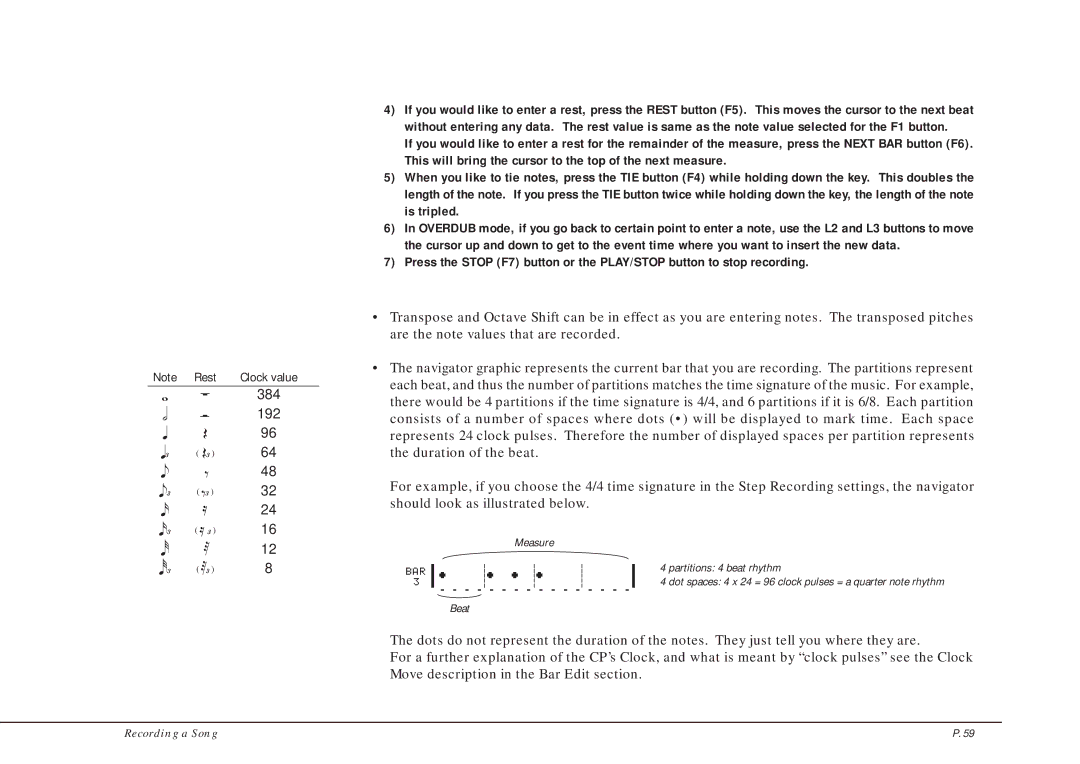
Note | Rest | Clock value |
w | î | 384 |
h | î | 192 |
q | Î | 96 |
q£ | ( Σ ) | 64 |
e | ä | 48 |
e£ | ( ä £ ) | 32 |
x | ( £ ) | 24 |
x£ | 16 |
4)If you would like to enter a rest, press the REST button (F5). This moves the cursor to the next beat without entering any data. The rest value is same as the note value selected for the F1 button.
If you would like to enter a rest for the remainder of the measure, press the NEXT BAR button (F6). This will bring the cursor to the top of the next measure.
5)When you like to tie notes, press the TIE button (F4) while holding down the key. This doubles the length of the note. If you press the TIE button twice while holding down the key, the length of the note is tripled.
6)In OVERDUB mode, if you go back to certain point to enter a note, use the L2 and L3 buttons to move the cursor up and down to get to the event time where you want to insert the new data.
7)Press the STOP (F7) button or the PLAY/STOP button to stop recording.
•Transpose and Octave Shift can be in effect as you are entering notes. The transposed pitches are the note values that are recorded.
•The navigator graphic represents the current bar that you are recording. The partitions represent each beat, and thus the number of partitions matches the time signature of the music. For example, there would be 4 partitions if the time signature is 4/4, and 6 partitions if it is 6/8. Each partition consists of a number of spaces where dots (•) will be displayed to mark time. Each space represents 24 clock pulses. Therefore the number of displayed spaces per partition represents the duration of the beat.
For example, if you choose the 4/4 time signature in the Step Recording settings, the navigator should look as illustrated below.
r | ¨ | 12 |
r£ | ( ¨ £ ) | 8 |
BAR
3
Measure
¥![]() ¥ ¥
¥ ¥ ![]() ¥
¥ ![]()
ÐÐÐÐÐÐÐÐÐÐÐÐÐÐÐÐ
Beat
4 partitions: 4 beat rhythm
4 dot spaces: 4 x 24 = 96 clock pulses = a quarter note rhythm
The dots do not represent the duration of the notes. They just tell you where they are.
For a further explanation of the CP’s Clock, and what is meant by “clock pulses” see the Clock Move description in the Bar Edit section.
Recording a Song | P. 59 |
